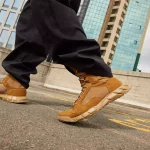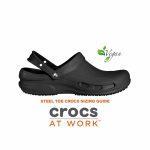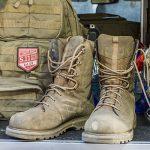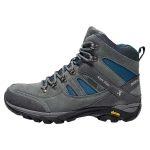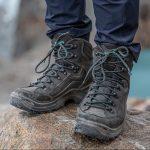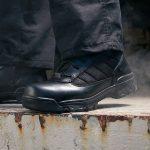Shoe size charts
The need for shoe size charts and Size conversion
Throughout history, about eleven (11) different major shoe-size systems evolved globally, with the US, British, European, and Japanese size systems as the most used ones. The below shoe size charts start with the correct size: the measurement of your foot. Discover a handy description How to measure your foot.
Shoe Sizes chart contents:
- Most recent shoe size charts on size-charts.com
- Newborns, babies, toddlers shoe size charts
- Kids and Youth shoe size conversion chart
- Women’s shoes Size Conversion Chart Length
- Men’s shoes size conversion chart length
- Shoe Length Size + Shoe Width Size = the true Shoe size
- Women’s Shoe Width sizing Chart and Size Conversion
- Men’s Shoe Width Sizing Chart and Size conversion
Discover some of the most recent Shoe Size Charts
When browsing and buying shoes online, it might become confusing to find the right size or use all the numerous size conversion charts. This page’s shoe size guide helps you convert different international shoe size systems for men’s, women’s, and kid’s shoes.
Finally, we hope size-charts.com will result in receiving the shoe that fits you and your loved ones. However, bear in mind that these size charts are only a guide to helping you find the right size.
Sizes differ notably between different shoe manufacturers and brands.
Newborns and toddler shoe size conversion: 3 months – 4-year-old shoe sizes
A very complete shoes sizes chart for newborns, babies, and toddler shoes. Sizing guide and conversion of kids shoe sizes footlength in centimeters, footlength in inches, Kids European shoe sizes, Kids UK shoe sizes and the US Kids shoe sizes.
| Metric Size in cm | Imperial Size in Inches | Kids Shoe EU Size | Kids Shoe UK Size | Kids Shoe US Size |
|---|---|---|---|---|
| 9.5 | 3.7″ | 161/2 | 1 | 11/2 |
| 10.0 | 3.9″ | 17 | 11/2 | 2 |
| 10.4 | 4.1″ | 18 | 2 | 21/2 |
| 10.8 | 4.3″ | 181/2 | 21/2 | 3 |
| 11.2 | 4.4″ | 19 | 3 | 31/2 |
| 11.6 | 4.6″ | 191/2 | 31/2 | 4 |
| 12.0 | 4.7″ | 20 | 4 | 41/2 |
| 12.5 | 4.9″ | 21 | 41/2 | 5 |
| 13.0 | 5.1″ | 211/2 | 5 | 51/2 |
| 13.3 | 5.3″ | 22 | 51/2 | 6 |
| 13.8 | 5.5″ | 23 | 6 | 61/2 |
| 14.2 | 5.6″ | 231/2 | 61/2 | 7 |
| 14.6 | 5.8″ | 24 | 7 | 71/2 |
| 15.0 | 5.9″ | 25 | 71/2 | 8 |
| 15.5 | 6.1″ | 26 | 8 | 81/2 |
Kids and Youth shoe size conversion: 4 – 10-year-old
A very complete shoes sizes chart for newborns, babies, and toddler shoes. Sizing guide and conversion of kids shoe sizes footlength in centimeters, footlength in inches, Kids European shoe sizes, Kids UK shoe sizes and the US Kids shoe sizes.
| Metric Size in cm | Imperial Size in Inches | Kids Shoe EU Size | Kids Shoe UK Size | Kids Shoe US Size |
| 16.3 | 6.4″ | 27 | 9 | 9.5 |
| 16.7 | 6.6″ | 27.5 | 9.5 | 10 |
| 17.2 | 6.8″ | 28 | 10 | 10.5 |
| 17.6 | 6.9″ | 28 | 10.5 | 11 |
| 18.0 | 7.1″ | 29.5 | 11 | 11.5 |
| 18.4 | 7.3″ | 30 | 11.5 | 12 |
| 18.8 | 7.4″ | 30.5 | 12 | 12.5 |
| 19.3 | 7.6″ | 31 | 12.5 | 13 |
| 19.7 | 7.8″ | 31.5 | 13 | 13.5 |
| 20.1 | 7.9″ | 32 | 13.5 | 1 |
| 20.5 | 8.1″ | 33 | 1 | 1.5 |
| 20.9 | 8.2″ | 33.5 | 1.5 | 2 |
| 21.4 | 8.4″ | 34 | 2 | 2.5 |
| 21.8 | 8.6″ | 35 | 3 | 5.5 |
| 22.5 | 8.9″ | 36 | 3.5 | 6 |
Women’s shoes US Size to European Size Conversion Chart
This chart can help you answer the following questions:
What is my shoe size in Europe? What is a size 9 women’s shoe in European sizes? What size is 39 in women’s shoes? What is a women’s shoe size 5 in Europe? What is a 7.5 women’s shoe size in Europe? How long is a size 5 women’s shoe? and so on…
Women’s shoes US Size to UK Size Conversion Chart
General Rule of Thumb in converting US size to EU sizes: Convert women’s US sizing to Euro Sizing by adding 31 to your US shoe size. For example, if you wear a women’s US size 8 shoe, then size 39 is likely your Euro size. Follow the below chart to be safe.
| Metric Size in cm | Imperial Size in Inches | EUR Size | UK Size | US Size |
|---|---|---|---|---|
| 21.8 | 8.6″ | 35 | 3 | 51/2 |
| 22.5 | 8.9″ | 36 | 31/2 | 6 |
| 23.0 | 9.0″ | 37 | 4 | 61/2 |
| 23.5 | 9.2″ | 371/2 | 41/2 | 7 |
| 23.8 | 9.4″ | 38 | 5 | 71/2 |
| 24.1 | 9.5″ | 381/2 | 51/2 | 8 |
| 24.7 | 9.7″ | 39 | 6 | 81/2 |
| 25.1 | 9.9″ | 391/2 | 7 | 9 |
| 25.4 | 10″ | 40 | 71/2 | 91/2 |
| 25.9 | 10.2″ | 401/2 | 8 | 10 |
| 26.2 | 10.3″ | 41 | 81/2 | 101/2 |
| 26.7 | 10.5″ | 411/2 | 9 | 11 |
| 27.1 | 10.7″ | 42 | 91/2 | 111/2 |
| 27.6 | 10.9″ | 421/2 | 10 | 12 |
Men’s shoes US Size to European Size Conversion Chart
This chart can help you answer the following questions:
What is men’s size 9 in European sizing? What is a size 42 in men’s shoes? What is a size 8 mens shoe in European sizes? What size is 39 in mens shoes? What is my shoe size in Europe? What is my men’s shoe size? What is a size 9 in mens? What men’s shoe size is 9.5 inches? Are men’s and youth shoe sizes the same?
Men’s shoes US Size to UK Size Conversion Chart
General Rule of Thumb in converting US size to EU sizes: Convert men’s US sizing to Euro Sizing by adding 33 to your US shoe size. For example, if you wear a men’s US size 10 shoe, then size 43 is likely your Euro size. Follow the below chart to be safe.
| Metric Size in cm | Imperial Size in Inches | EUR Size | UK Size | US Size |
|---|---|---|---|---|
| 23.8 | 9.4″ | 37 | 31/2 | 4 |
| 24.1 | 9.5″ | 371/2 | 4 | 41/2 |
| 24.8 | 9.7″ | 38 | 5 | 51/2 |
| 25.1 | 9.9″ | 39 | 6 | 61/2 |
| 25.4 | 10.0″ | 391/2 | 61/2 | 7 |
| 26.0 | 10.2″ | 40 | 7 | 71/2 |
| 26.5 | 10.4″ | 41 | 71/2 | 8 |
| 26.8 | 10.6″ | 411/2 | 71/2 | 81/2 |
| 27.0 | 10.7″ | 42 | 8 | 9 |
| 27.5 | 10.8″ | 421/2 | 81/2 | 91/2 |
| 28.0 | 11.0″ | 43 | 9 | 10 |
| 28.3 | 11.1″ | 431/2 | 91/2 | 10 |
| 28.5 | 11.2″ | 44 | 10 | 101/2 |
| 29.0 | 11.4″ | 441/2 | 10 | 11 |
| 29.5 | 11.6″ | 45 | 101/2 | 111/2 |
| 30.1 | 11.8″ | 46 | 11 | 12 |
| 30.5 | 12.0″ | 461/2 | 111/2 | 121/2 |
| 31.0 | 12.2″ | 47 | 12 | 13 |
| 31.6 | 12.4″ | 48 | 13 | 131/2 |
| 32.1 | 12.6″ | 49 | 14 | 15 |
| 32.7 | 12.8″ | 50 | 15 | 16 |
Shoe Size + Shoe Width = the true Shoe size
Measure the widest part of your foot using a tape measure.
Find your foot width and size using the chart below.
Shoe size + foot width = true foot size.
Sometimes there’s only a letter indicating the width:
Narrow Shoe Width: N (or D or E)
Medium Shoe Width: M (or F)
Wide Shoe Width: W (or G)
Extra Wide (X_Wide): XW (or H)
Women’s Shoe Width size chart
The complete overview in women’s shoes width shoes sizes in US sizes, EU sizes and UK sizes, converted to E, EEE, EEEEE width size, from standard to ultra wide shoes sizes
| Shoe Size US | Shoe Size EU | Shoe Size UK | Shoe D Width mm | Shoe E Width mm | Shoe EEE Width mm | Shoe EEEEE Width mm | |
| 5 | 35 | 3 | 210 | 216 | 228 | 241 | |
| 6 | 36 | 4 | 216 | 222 | 234 | 247 | |
| 7 | 37 | 5 | 222 | 228 | 241 | 254 | |
| 8 | 38 | 6 | 228 | 234 | 247 | 260 | |
| 9 | 39 | 7 | 234 | 241 | 254 | 266 | |
| 10 | 40 | 8 | 241 | 247 | 260 | 272 | |
| 11 | 41 | 9 | 247 | 254 | 266 | 278 | |
| 12 | 42 | 10 | 254 | 260 | 272 | 284 | |
| FOOT WIDTH | D FIT Standard MEDIUM (M) | E FIT Wide WIDE (W) | EEE FIT Extra Wide (WW, XW, 2W) | EEEEE FIT Ultra Wide (XXW, 4W) |
Men’s Shoe Width size chart
The complete overview in men’s shoes width shoes sizes in US sizes, EU sizes and UK sizes, converted to E, EEE, EEEEE width size, from standard to ultra wide men shoes sizes
| Shoe Size US | Shoe Size EU | Shoe Size UK | Shoe D Width mm | Shoe E Width mm | Shoe EEE Width mm | Shoe EEEEE Width mm | |
| 7 | 39 | 6 | 234 | 240 | 246 | 258 | |
| 8 | 40 | 7 | 240 | 246 | 252 | 264 | |
| 9 | 41-42 | 8 | 246 | 252 | 258 | 270 | |
| 10 | 43 | 9 | 252 | 258 | 264 | 276 | |
| 11 | 44-45 | 10 | 258 | 264 | 270 | 284 | |
| 12 | 46 | 11 | 264 | 270 | 276 | 288 | |
| 13 | 47 | 12 | 276 | 282 | 286 | 300 | |
| 14 | 48 | 13 | 288 | 294 | 298 | 310 | |
| FOOT WIDTH | D FIT Standard MEDIUM (M) | E FIT Wide WIDE (W) | EEE FIT Extra Wide (WW, XW, 2W) | EEEEE FIT Ultra Wide (XXW, 4W) |
European Shoe Size Conversion Charts
In Europe, shoe makers are mostly following the same shoe-size system. Simultaneously, however, the local taste and ergonomics by country result in different size indications. For instance, a size 37 in France might be a 38 in Germany. Because of all the different countries in Europe, there is no real standard in the shoe sizes.
As a result, many manufacturers’ shoes might have different sizes, although they have the same measurements.
Understanding Shoe Sizing
As you could tell in the above sizing charts and shoe size converters you and your son could have the same size indication but obviously your feet aren’t the same size.
In the US shoe sizes, Men and women can wear a size 8, but the man’s size 8 will be almost a full inch longer than the woman’s. In European sizes, you don’t have this problem at all. The man with size 8 is a 41, the lady with size 8 is a 38.5.
There’s lots of variation in shoe width, and many countries and regions don’t specify the width in shoe sizes. It’s good to know that when a model is feeling narrow in a certain size, going up a size or half a size won’t solve it. A narrow shoe mainly remains a narrow shoe.
The basis of it all is measuring your feet, so a piece of paper, a pencil, some measuring tape, and the right size chart can help you get the perfect fit.
Shoe Sizing Basic rules
Shoe Length
Your numerical shoe size, whether you are buying Brazilian, Italian shoes, or American shoes, is based on the length of your feet. The length of your feet is the distance from your heel to your longest toe.
It does not account for shape variations or width.
Shoe Width
Most shoes on the market only come in standard widths; many are available in wider or narrower styles. Knowing your foot’s width and how it translates into shoe sizes makes the difference between a bad fit and a comfortable fit.
Around 70 percent of all people are walking daily with shoes that aren’t wide enough.
Shoe width is measured around the forefoot, typically the widest part of your foot. Not all shoe brands offer different widths, though. Finding shoes that are wider or narrower than average can be challenging.
In the US, shoe widths are AAA, AA, A, B, C, D, E, EE, and EEE, ranging from narrowest to widest. Sometimes, the letters are replaced by a combination of letters and numbers, such as “4E.”
Children’s shoes usually do not come in varying widths. One width for girls’ and boys’ shoes.
A full page about the importance of width in shoe sizes can be found here
International Shoe Size Systems
In The US, women’s shoes come in whole and half sizes that range from 5 through 12. Men’s shoes have whole and half sizes from 5 through 16. That’s only valid in the United States, there are at least 10 other shoe sizing systems in the world. For instance, a woman who wears a size 9 in the United States will wear a size 7 in the UK, a size 39/40 in Europe, and a size 24.5 in Japan.
Start to measure your feet to find Your Shoe Size
From new-born shoes to men’s safety boots, shoes are sized according to length and width. It all starts with measuring your feet.
How to Measure your feet for the perfect shoe size?
Find a full detailed post about How to measure your shoe size correctly here.
10 easy steps to measure your feet correctly:
- Measure your feet in the afternoon.
- Stand When Measuring
- Wear socks
- Be precise
- Measure both feet
- Stand on your piece of paper
- Start drawing
- Measure the length of your feet
- Find your width fitting by drawing or with measuring tape
- Determine your size in the conversion charts
Find out How to measure your shoe size correctly here.
Looking for Work Shoes, Work Boots or Safety Shoe – Safety Boots Size Charts?
- Oakley Boots Size Charts: Men, Women

- Danner Boots Size for Men and Women

- Steel Toe Crocs Size Guide for women and men

- 5.11 Boots Size Charts for Men and Women

- Under Armour Tactical Boots Size Chart

- Men’s Workwear Size Chart

- McKinley Shoes Size

- LOWA Boots Sizes for Adults and Kids

- What is my Bates Boots Size?


